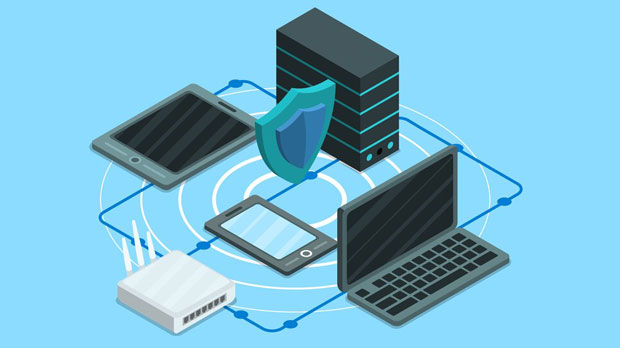Unmetered residential proxies are a valuable tool for ensuring online anonymity and bypassing geographical restrictions. These proxies work by routing web traffic through real residential devices, which makes them appear as regular users, thus overcoming anti-bot protections. When deployed in multi-device and multi-network environments, they offer unparalleled flexibility and efficiency. The real-world application of these proxies in a distributed setup allows for better scalability, security, and network coverage. This article will explore the performance and benefits of Unmetered Residential Proxies in such dynamic environments, providing insights into their key advantages, challenges, and best-use practices. Understanding Unmetered Residential ProxiesUnmetered Residential Proxies stand apart from standard proxies because they use real residential IP addresses, making them more legitimate in the eyes of websites. Traditional proxies often face blocks or CAPTCHAs due to their data center origins. Residential proxies, however, mimic real-user traffic and appear much less suspicious. Unmetered refers to the lack of traffic limitations, meaning users can send as much data as needed without worrying about hitting bandwidth caps.These proxies are often used for web scraping, data harvesting, ad verification, SEO monitoring, and more. Their key advantage lies in their ability to remain undetected by websites, making them essential in environments where privacy and reliability are crucial.Performance in Multi-Device EnvironmentsOne of the standout features of Unmetered Residential Proxies is their exceptional performance across multiple devices. These proxies are designed to work seamlessly across a range of devices, including smartphones, tablets, laptops, and desktops. In multi-device setups, they ensure smooth and uninterrupted browsing experiences while maintaining high speeds.Unmetered Residential Proxies help distribute web traffic efficiently across various devices, preventing slowdowns and reducing the risk of network congestion. For instance, in scenarios where several users or devices are accessing the internet simultaneously, the proxies ensure that each device gets a stable connection without facing limitations.Additionally, with multi-device deployments, users can access different geographic regions and data points simultaneously. This is particularly useful for tasks such as localized market research or managing multiple social media accounts, where diverse and geographically accurate IP addresses are required.Advantages of Multi-Network DeploymentsWhen Unmetered Residential Proxies are utilized in multi-network environments, they offer increased resilience and coverage. Multi-network setups generally refer to using proxies from various networks or ISPs, which helps to ensure a more robust and less detectable browsing experience.One of the main benefits of deploying proxies across multiple networks is the ability to prevent IP blockages. Websites can recognize and block IPs that come from the same network if too many requests are sent in a short period. By using proxies from different ISPs or networks, users can reduce the likelihood of being blocked and maintain consistent access to websites.Moreover, multi-network deployments are highly scalable. As the number of devices or data demands increase, additional networks can be added to accommodate the growing needs without compromising speed or reliability. This is crucial for businesses involved in large-scale data collection, such as those in e-commerce or digital marketing.Handling Scalability ChallengesWhile Unmetered Residential Proxies offer high scalability, managing a large-scale multi-device, multi-network setup can be complex. As the number of devices and networks increases, so does the demand for effective management and monitoring. To ensure optimal performance, businesses need to monitor proxy health, manage traffic distribution, and address any issues related to IP rotation or network congestion.In such a scenario, automated tools and real-time monitoring systems become invaluable. These tools help manage the proxy pool, ensure IPs are rotated efficiently, and identify and resolve any connectivity issues across multiple devices and networks. Without such management tools, businesses risk downtime, slowdowns, or IP bans.Security and Privacy BenefitsUnmetered Residential Proxies offer significant advantages in terms of security and privacy. In multi-device, multi-network environments, these proxies help encrypt traffic and mask the user’s real IP address, ensuring that sensitive information remains protected. This is particularly beneficial for businesses handling confidential customer data or conducting competitive research in sensitive industries.Moreover, the decentralized nature of residential proxies makes it difficult for websites or online services to track or block users, providing an added layer of protection against cyber threats. By leveraging a broad network of residential IPs, users can safeguard themselves against targeted attacks, such as DDoS (Distributed Denial of Service) or man-in-the-middle attacks.Common Challenges and SolutionsDespite their many advantages, using Unmetered Residential Proxies in multi-device and multi-network environments is not without challenges. One of the main hurdles is ensuring consistent performance across all devices and networks. Variability in internet speeds or inconsistent IP rotation can lead to slower connections or difficulties in maintaining anonymity.To overcome these challenges, users should ensure that they are working with a high-quality proxy provider that guarantees fast and reliable speeds. Proxy providers often offer SLAs (Service Level Agreements) that ensure uptime and performance, making it easier for businesses to plan their operations effectively.Additionally, users should be mindful of IP pool management. Large-scale operations often require managing thousands of proxies to meet demand, and failing to manage these IPs properly can result in some proxies being overused and blocked. It’s important to rotate IPs frequently and diversify the proxy pool to ensure long-term sustainability.Real-World ApplicationsUnmetered Residential Proxies have a wide range of practical applications in multi-device, multi-network environments. One of the most common use cases is for web scraping, where businesses gather data from various online sources. With residential proxies, they can bypass geo-blocks and avoid detection while scraping large amounts of data from multiple websites at once.For e-commerce businesses, these proxies help in monitoring competitors’ pricing, stock availability, and marketing strategies. By using proxies across different devices and networks, businesses can gather data from various geographical locations to make more informed decisions.Additionally, digital marketers use Unmetered Residential Proxies for social media management, SEO tracking, and ad verification. These proxies allow for the use of multiple accounts or different browsing sessions without risking account bans or IP blocks.In conclusion, Unmetered Residential Proxies offer exceptional performance in multi-device and multi-network environments, providing businesses with enhanced flexibility, security, and scalability. Despite the challenges that come with managing large-scale proxy deployments, the benefits far outweigh the risks, especially when using reliable proxy providers and monitoring tools. For businesses that rely on web scraping, competitive research, or managing multiple online identities, Unmetered Residential Proxies are an indispensable tool that ensures smooth, uninterrupted operations across diverse online environments.
Aug 29, 2025

































































